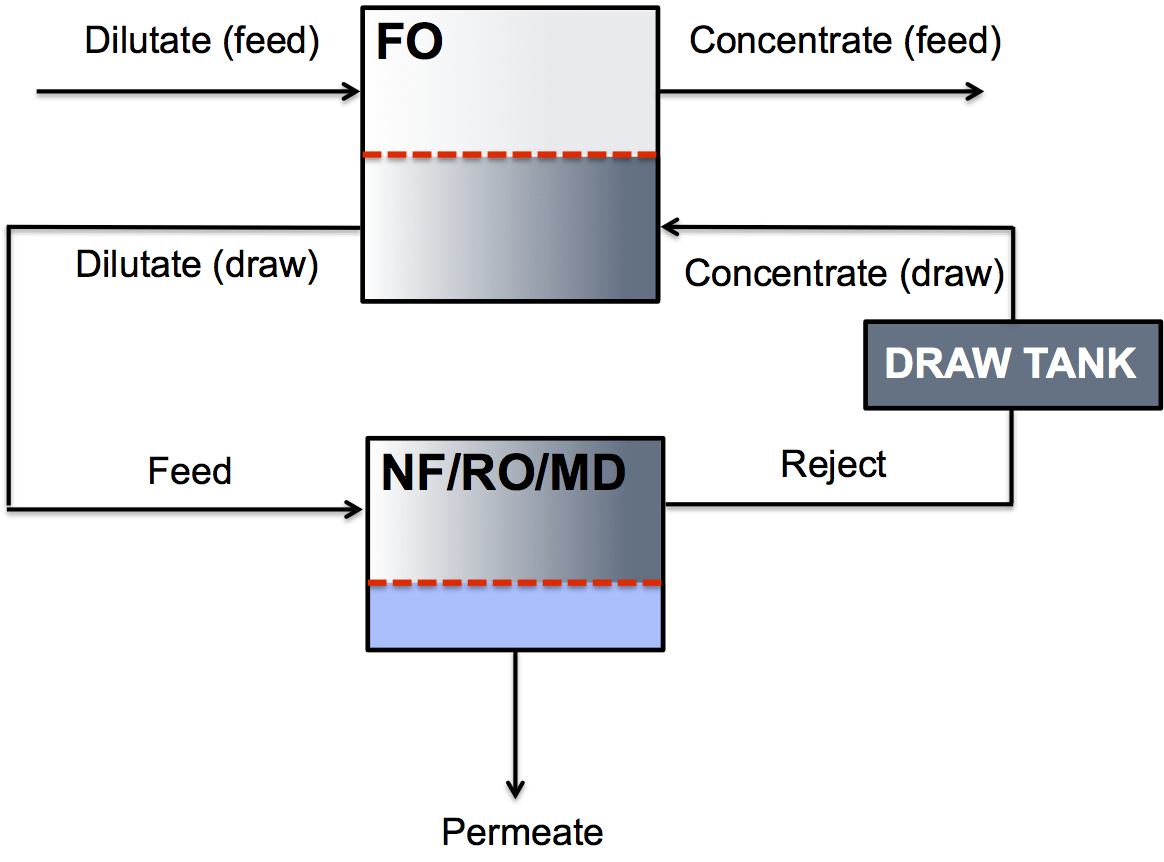A general introduction to forward osmosis systems
If forward osmosis membranes are the engine of forward osmosis based water treatment processes, then forward osmosis systems are all the other components that enable the car to move from A to B, or in this case carry out actual water treatment tasks. We have written several articles relating to forward osmosis systems, and the goal of this page is to give you – our reader – an overview of the work we’ve done. If you have suggestions on how to improve this page or simply want to let us know that we did a good job (thanks in advance!), please feel free to drop us an email on forwardosmosistechportal@gmail.com.
What does a forward osmosis system consist of?
ForwardOsmosisTech’s definition of a forward osmosis system: “All the components needed to enable forward osmosis membranes to be used in water treatment applications”
With this definition in mind, forward osmosis systems typically include the following components:
- The forward osmosis membrane housing (also know as a forward osmosis module)
- Low energy pumps to move the draw and feed stream in a cross-flow configuration across either side of the FO membrane
- Pipes and valves
- Feed stream pretreatment systems to remove large contaminants
- Various instruments & meters for continuous performance evaluation
- Draw solution reservoir tank
- Feed solution reservoir tank
- Performance enhancing design elements
- A draw solution regeneration system (i.e. a system able to separate draw solutes from the water continuously extracted from the feed stream) if one of the end products of the system in question is reusable water
For more detailed information on forward osmosis systems and systems designs, please refer to our article: “Forward osmosis system design“.
Forward osmosis system classification: stand-alone & hybrid
There are many ways of classifying forward osmosis systems. Here at ForwardOsmosisTech we have chosen the simplest approach, namely classifying forward osmosis systems into two broad categories:
- Stand-alone forward osmosis systems where the system outputs are a concentrated feed solution and a diluted draw solution
- Hybrid forward osmosis systems where forward osmosis elements are combined with other membrane technologies and where the outputs are a concentrated feed solution and permeate consisting of reusable water (potable or non-potable depending on the design of the system)
Follow the two links above to our articles on stand-alone and hybrid forward osmosis systems where you’ll find detailed information explaining the two figures below as well as suggested application areas for the two categories of systems.
 |
 |
How can the performance of forward osmosis systems be improved?
The main purpose of forward osmosis systems is to create operating conditions that maximize the performance of the system’s engine – the forward osmosis membranes – while at the same time minimizing the energy needed to maintain said conditions. With this in mind, forward osmosis system performance can be improved through the following general strategies:
- Minimizing the energy needed to pump and recirculate feed and draw streams through the system
- Improving the forward osmosis module design to increase fluid turbulence and thus reduce external concentration polarization
- Improving forward osmosis membrane performance
